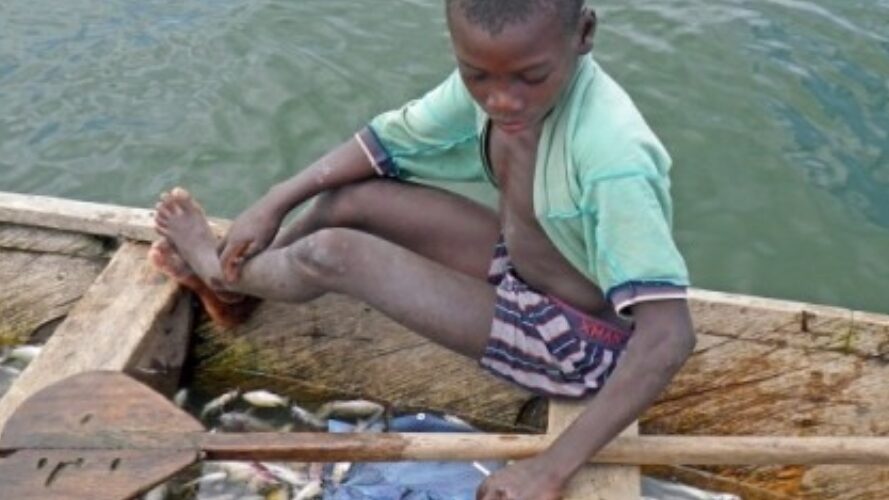Exclusive Report from IJM Investigator: What Broke My Heart to Witness at Lake Volta
Slavery
When I went with IJM to investigate child slavery in the West African nation of Ghana last year, I was wholly unprepared for what we saw: children suffering all around us, with no one at all to protect them.
We were on Lake Volta, the world’s largest man-made lake, where tens of thousands of children (some as young as four) work on fishing boats during peak season. Experts in Ghana agreed that many of these boys and girls are slaves, but no one knew quite how many. Our team went to confirm the scale of the problem and determine what IJM could do to help.
For 16 intense days we lived on Lake Volta.
The lake is enormous—covering 3,283 square miles—and there are children working on small fishing operations all over it. Starting at 4:30 a.m. each day, we travelled a targeted area of the massive lake to uncover the truth about the children working there.
We talked to boat masters and the boys separately, so we could know for certain whether a young boy was simply out fishing with his family, or if he was being forced to work.
It quickly became quite easy—and heartbreaking—to spot the boys who were being held as slaves. The boys with their families were often smiling, well fed and friendly. The boys held as slaves would barely look us in the eye.
The boat masters told us how they operate: They go to remote villages to buy young boys, because the youngest are easiest to control.
One man personally showed us six boys available for sale at 150 dollars each. The slave owners convince families that their boys will be educated and receive work. But these children are not paid, and they are not educated or cared for. They are trapped.
The boys held as slaves wore torn, dirty and ragged clothing. Many wore no clothes at all—nothing. Most of these boys had distended stomachs, skin diseases, hair falling out, and open sores and wounds. Some were openly crying as we approached. Others looked completely exhausted and their eyes, vacant of emotion.
We were amazed at how these children could wrestle the massive nets and fishing lines into the boats. Their arms and bodies are left deeply scarred from fish with sharp teeth or spikes. And if a net gets stuck, they are made to swim down and untangle it. Many little boys drown as a result.
I will never forget one boy named Gabriel.*
He was about 18 years old, but told us how he was trafficked into slavery at 11. Covered head to toe in scars, he said he was beaten every single day for seven years by his master. There was a 5-year-old in his boat, too. He would share that same fate.
Gabriel seemed to sense we were there to help. “Don’t leave me with this man,” he begged us. “He is wicked. Don’t leave us.”
To drive away from that reality, from such a desperate and dire need for rescue and relief, and to leave these little children to suffer—it tore against everything in my soul.
This was my single hardest assignment with IJM, and possibly in my career. But I believe that God has seen these children and led us to them, and we are going back to Ghana.
Our new field office director is now on the ground—the work of opening a new office in Ghana is now underway.
*A pseudonym.